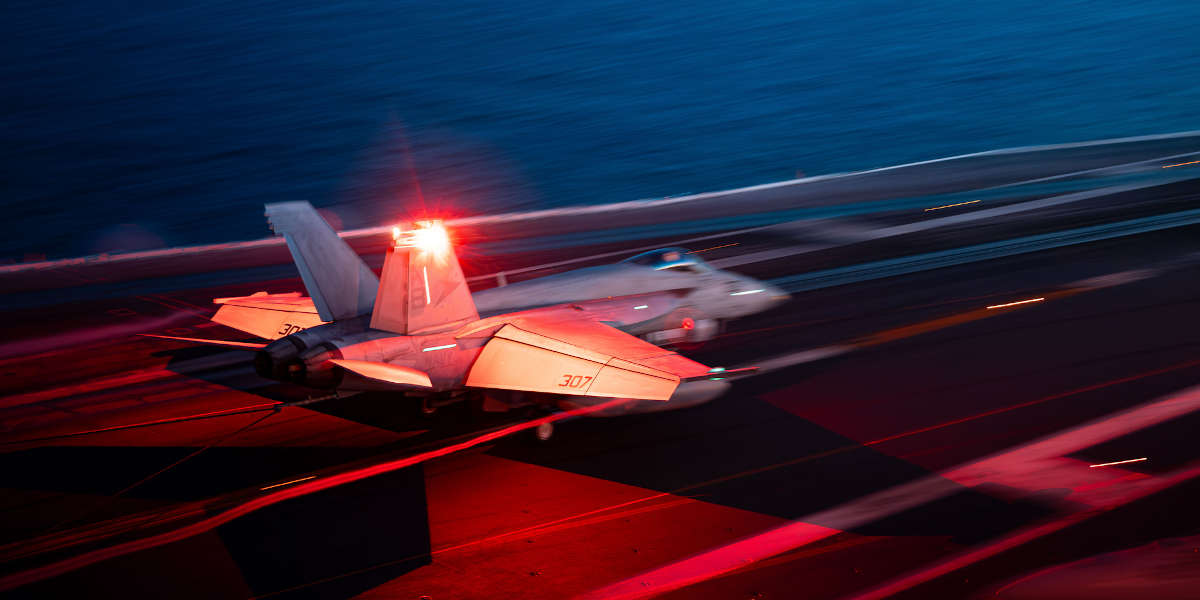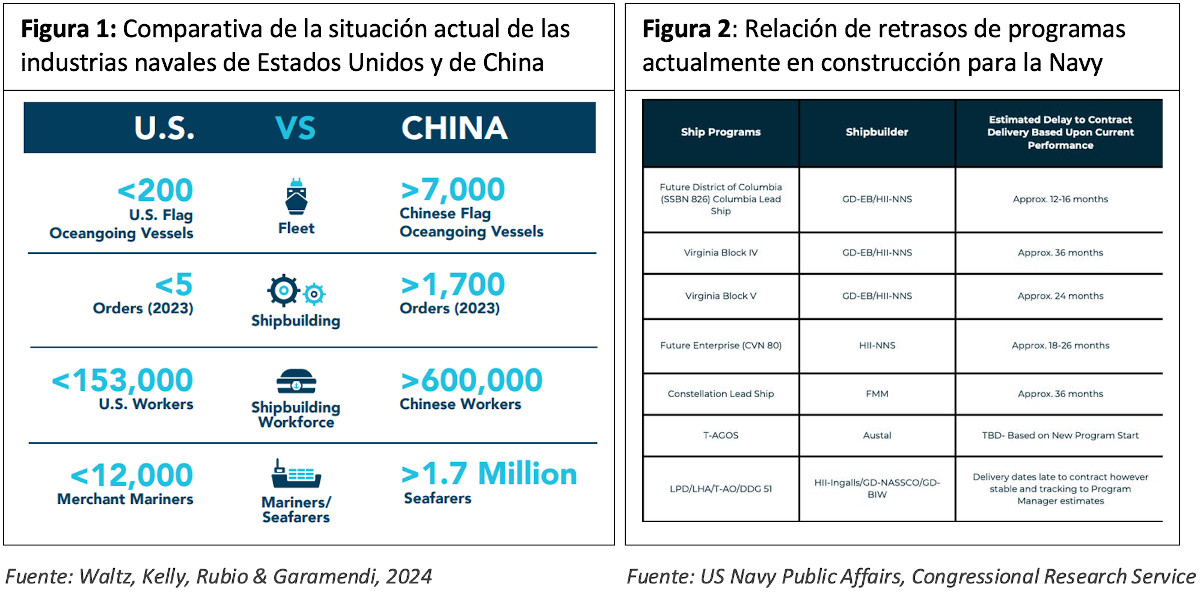In the picture
A Super Hornet lands on the deck of the aircraft carrier USS Harry S. Truman, October 2024 [US Navy/Cordoviz].
On Tuesday, November 5, the United States will once again stake its future for the next four years in the 2024 presidential election. Both candidates, Kamala Harris for the Democratic Party and Donald Trump for the Republican Party, will face a very complicated geopolitical landscape if elected. One of the most important issues that the new Administration will have to face, in light of the growing deterioration of global stability at sea, will be the reconstruction of the maritime power that has sustained Washington for decades as a global superpower - a power that, for some years now, has been progressively degrading. Thus, among other things, Americans will decide who will be their nation's president in a term that will coincide with the window in which many have been arguing for years could be the one chosen by China to invade Taiwan.
Deterioration of the Global Order at Sea
With the end of the Cold War, the navies of the Atlantic Alliance entered a period of relative maritime stability, which led many of them to reduce budgetary investments and to a significant decrease in the naval capabilities of their fleets. The negative consequences of these reductions surfaced in 2014 with the Russian invasion of Crimea (a move that, in large part, responds to Moscow's strategic need for ports with access to warm waters such as Sevastopol, a key strategic enclave for the Soviet navy) and the resulting conflict between Russia and Ukraine.
In recent months, the crisis in the Red Sea resulting from the conflict in Gaza has put the world's Economics at serious risk. Through attacks on international maritime trade transiting the region, the Houthis have managed to divert much of the conflict that transits one of the most important routes today. Specifically, before the attacks began, 53% of the trade between Asia and Europe transited through the Suez Canal, 23% through the Panama Canal, and 23% around the Cape of Good Hope. One year later, these figures have been drastically transformed: traffic in the Suez has dropped to 15%, while in Panama it has risen slightly to 26%, and at the Cape of Good Hope it has soared to 58%.
Faced with such threats, many shipping lines have decided to redirect their vessels to the route around the Cape of Good Hope, a route that involves longer sailing times, and thus higher economic costs. The United States launched Operation Prosperity Guardian in December 2023, which was joined by several other countries deploying warships to escort merchant ships and intercept any anti-ship ballistic missile or unmanned drone attacks. Shortly thereafter, in February 2024, the European Union followed suit by launching operation 'Aspides', in which the participation of France and Italy is being B .
However, neither operation has succeeded in deterring the Houthis in Yemen from stopping their attacks, so their results have been more modest than initially desired. Moreover, despite constituting a threat of relatively leave intensity (the time gap between attacks has been sufficiently wide to allow warships to intercept them effectively), the crisis has highlighted the notorious inability of allied warships to deal with higher intensity threats (such as might be expected, for example, in a hypothetical conflict in Taiwan vis-à-vis China). Many of the warships exhausted their arsenals within a few days and were forced to leave the theater of operations to resupply.
China and the sea
The navy of the People's Liberation Army of China (PLA Navy) entered a new stage of its development with the arrival of Xi Jinping to the presidency of the PRC. Under the auspices of the new leader, and following the path set decades ago by Mao for the reconstruction of China's naval power, the Asian giant has become the largest navy in the world by issue of ships (a factor that, although it should not be considered as decisive, gives an important weight). Its shipbuilding industry has established itself as the leader in the construction of merchant ships, and Chinese state-owned companies control close to 100 ports strategically located around the globe. Both give China a potentially huge strategic advantage in the event of a large-scale conflict, in which maritime communications would be a key element.
For decades, China has been devoting great efforts to building the military (and particularly naval) capabilities that will enable it to establish itself as a major regional power. To this end, in addition to massive investments in its navy, Beijing has also devoted much attention to building the world's largest Coast Guard, as well as contributing to the growth of the so-called maritime militia (a fleet of hundreds of civilian fishing vessels that are employed for military purposes in a coordinated manner) to exert pressure in those regions where China and other neighboring countries have disputes over the control of some islands and atolls. This paramilitary fleet, used assertively against the Philippines, Vietnam or Japan, among others, allows Beijing to pursue its strategic objectives without employing its warships, thus diminishing any possibility of appearing too hostile.
On the other hand, the Chinese navy has spent years training and developing the necessary doctrine to confront the U.S. Navy and its allies, considering the former as the main threat to the achievement of its objectives. In addition to increasing the pace of its deployments and naval exercises, which have been growing in quality and quantity over the last few years, China has built up a coastal defense system (eminently offensive in nature) with which to deny any adversary access to the South China Sea region, and potentially sink 'enemy' ships thanks to missiles such as the Dong Feng-21D (DF-21D), nicknamed the 'Carrier Killer'. The main source of dispute between the two major players is the status and future of Taiwan, something for which, as we have already highlighted in the past, both countries could trigger a conflict with catastrophic global consequences. Among the estimates made by some of the top U.S. military and political leaders, Admiral Davidson's warning a few years ago stands out, which established as the most likely window for an invasion sometime between 2026 and 2029.
NAVPLAN 2024 and the U.S. maritime crisis
At the same time that the strategic status at sea has been deteriorating and China's maritime capabilities have grown exponentially, the status in the United States at the domestic level has experienced an opposite trajectory in certain respects. One of the most significant aspects in this regard is the B advantage China holds over Washington in terms of domestic merchant shipping. The capacity of its merchant marine has been degrading over the past three decades as China has been gaining ground and establishing itself as one of the world's leading countries.
But at the same time, the problems are also significant for its navy. The US Navy has been shrinking over the years, currently standing at close to 300 ships (one of the lowest numbers in many decades). Many of the units in service today are the result of the new wave of classes planned and commissioned during the Reagan Administration years (1980s), such as the destroyers of the class 'Arleigh Burke', the cruisers of the class 'Ticonderoga' or the nuclear-powered submarines of the class 'Seawolf'. Many units of these classes, as well as the aircraft carriers of the class 'Nimitz', have been given away from leave during the last two decades, without immediate replacement. Thus, along with the drastic reduction of units that saw the navy cut in half between 1990 and 1999, it has found itself unable to grow again when the need to do so has come.


